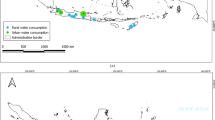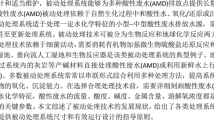Abstract
The quality of potable water has been a major issue in the water industry for the last few decades. The deterioration of treated water can be due to physical, chemical or microbiological changes that occur in the water during distribution. In addition, pipe material and decay of a disinfectant agent can affect the quality of the water being distributed. In this study the purpose was to simulate the decay of chlorine in two networks, one made of old cast iron (CI) pipes and another of polyethylene (PE) pipes. In addition the performance of the network considering chlorine concentration, velocity, water age, and an intrusion of a contaminant – in this case organic material – into the network was evaluated. The simulations were performed with EPANET software using as the simulation network an example network from the program. It was found that the CI network requires higher initial chlorine concentrations than the PE network to maintain the required minimum chlorine concentration throughout the whole network. To maintain the chlorine concentrations required by WHO (Cl must be greater than 0.2 mg/l and lesser than 0.5 mg/l) re-chlorination stations were necessary to add into both networks. The performance of both networks before re-chlorination was low due to high initial chlorine concentrations, but after the addition of the re-chlorination stations it was 100% throughout the networks. The performance of the velocities was good in both networks. The performance of the water age was dependent mainly on the tank usage, and the performance of contamination by organic material depended on the coefficient that defines the decay rate of the organic material in the bulk phase.
Similar content being viewed by others
References
Araujo L (2005) Losses Control in Sustainable Management of Water Supply Systems. Ph.D. Thesis, Instituto Superior Técnico, Lisbon, Portugal (in Portuguese)
Araujo LS, Coelho ST, Ramos HM (2003) Estimation of distributed pressure-dependent leakage and consumer demand in water supply networks. CCWI (Computing and Control for the Water Industry), Imperial College, UK
Araujo LS, Ramos H, Coelho ST (2006) Pressure control for leakage minimisation in water distribution systems management. Water Resour Manag 20(1):133–149
Clark RM, Haught MC (2005) Characterizing pipe wall demand: implications for water quality modeling. J Water Resour Plan Manage 131(3):208–217
Clark RM, Sivaganesan M (2002) Predicting chlorine residuals in drinking water: second order model. J Water Resour Plan Manage 128(2):152–161
Coelho ST (1997) Performance assessment through mathematical modelling. Workshop on Performance Indicators for Transmission and Distribution Systems, IWSA, Associação Internacional dos Distribuidores de Água, National Laboratory of Civil Engineering, Lisbon, Portugal
Coelho ST, Alegre H (1999) Performance indicators of water supply systems. National Laboratory of Civil Engineering, Lisbon, Portugal (in Portuguese)
Colombo AF, Karney BW (2002) Energy and costs of leaky pipes: toward comprehensive picture. J Water Resour Plan Manage 128(6):441–450
Decreto Regulamentar (DR) 23/95 (1995) National Regulatory: Regulamento geral dos sistemas públicos e prediais de distribuição de água e de drenagem de águas residuais
DiGiano FA, Zhang W, Travaglia A (2005) Calculation of the mean residence time in the distribution systems from tracer studies and models. J Water SRT – Aqua 54(1):1–14
Frateur I, Deslouis C, Kiene L, Levi Y, Tribollet B (1999) Free chlorine consumption induced by cast iron corrosion in drinking water distribution systems. Water Res 33(8):1781–1790
Gullick RW, LeChevallier MW, Svinland RC, Friedman MJ (2004) Occurence of transient low and negative pressures in distribution systems. J Am Water Works Assoc 96(11):52–66
Hallam NB, West JR, Forster CF, Powell JC, Spencer I (2002) The decay of chlorine associated with the pipe wall in water distribution systems. Water Res 36(14):3479–3488
Hallam NB, Hua F, West JR, Forster CF, Simms JS (2003) Bulk decay of chlorine in water distribution systems. J Water Resour Plan Manage 129(1):78–81
Jegatheesan V, Kastl G, Fisher I, Angles M, Chandy J (2000) Modelling biofilm growth and disinfection decay in drinking water. Water Sci Tech 41(4–5):339–345
Kastl GJ, Fisher IH, Jegatheesan V (1999) Evaluation of chlorine decay kinetics expression for drinking water distribution systems modelling. J Water SRT – Aqua 48(6):219–226
Kerneïs A, Nakache F, Deguin A, Feinberg M (1995) The effects of water residence time on the biological quality in a distribution network. Water Res 29(7):1719–1727
Kiéne L, Lu W, Lévi Y (1998) Relative importance of the phenomena responsible for chlorine decay in drinking water distribution systems. Water Sci Tech 38(6):219–227
Kirmeyer GJ, Friedman M, Martel KD, Noran PF, Smith D (2001) Practical guidelines for maintaining distribution system water quality. J AWWA 93(7):62–74
LeChevallier MW, Gullick RW, Karim M (2003) The potential for health risks from intrusion of contaminants into the distribution system from pressure transients distribution system. White Paper American Water Works Service Company, Inc., Voorhees, NJ
Loureiro D (2002) The influence of transients in characteristic hydraulic and water quality parameters. MSc. Thesis. IST, Lisbon (in Portuguese)
Lu C, Biswas P, Clark RM (1995) Simultaneous transport of substrates, disinfectants and microorganisms in water pipes. Water Res 29(3):881–894
Maier SH, Powell RS, Woodward CA (2000) Calibration and comparison of chlorine decay models for a test water distribution system. Water Res 34(8):2301–2309
Menaia J, Coelho ST, Lopes A, Fonte E, Palma J (2002) Dependency of Bulk Chlorine Decay Rates on Flow Velocity in Water Distribution Networks. World Water Congress 2002, Melbourne, Australia
Munavalli GR, Mohan Kumar MS (2003) Water quality parameter estimation in steady-state distribution system. J Water Resour Plan Manage 129(2):124–134
Powell JC, Hallam NB, West JR, Forster CF, Simms J (2000a) Factors which control bulk chlorine decay rates. Water Res 34(1):117–126
Powell JC, West JR, Hallam NB, Forster CF, Simms J (2000b) Performance of various kinetic models for chlorine decay. J Water Resour Plan Manage 126(1):13–20
Power KN, Nagy LA (1999) Relationship between bacterial regrowth and some physical and chemical parameters within Sydney’s drinking water distribution system. Water Res 33(3):741–750
Rossman LA (2000) EPANET 2 – User’s manual. United States Environmental Protection Agency
Sander A, Berghult B, Elfström Broo A, Lind Johansson E, Hedberg T (1996) Iron corrosion in drinking water distribution system – the effect of pH, calcium and hydrogen carbonate. Corr Sci 23(3):443–455
Sarin P, Snoeyink VL, Bebee J, Jim KK, Beckett MA, Kriven WM, Clement JA (2004) Iron release from corroded iron pipes in drinking water distribution systems: effect of dissolved oxygen. Water Res 38(5):1259–1269
Vasconcelos JJ, Rossman LA, Grayman WM, Boulos PF, Clark RM (1997) Kinetics of chlorine decay. Journal of AWWA 89(7):54–65
Vikesland PJ, Ozekin K, Valentine RL (2001) Monochloramine decay in model and distribution system waters. Water Res 35(7):1766–1776
Volk B, Dundore E, Schiermann J, Lechevallier M (2000) Practical evaluation of iron corrosion control in a drinking water distribution system. Water Res 34(6):1967–1974
Walski TM (1984) Analysis of water distribution systems. Van Nostrand Company, Ltd., New York, New York, USA
Author information
Authors and Affiliations
Corresponding author
Rights and permissions
About this article
Cite this article
Tamminen, S., Ramos, H. & Covas, D. Water Supply System Performance for Different Pipe Materials Part I: Water Quality Analysis. Water Resour Manage 22, 1579–1607 (2008). https://doi.org/10.1007/s11269-008-9244-x
Received:
Accepted:
Published:
Issue Date:
DOI: https://doi.org/10.1007/s11269-008-9244-x




